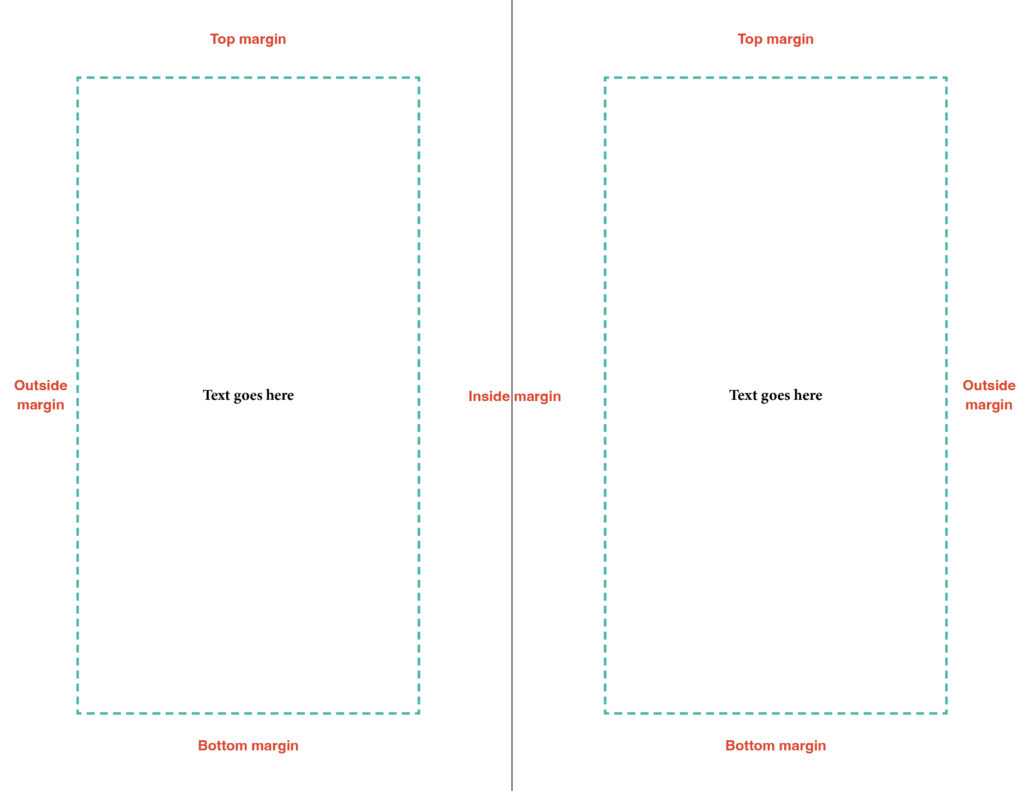Book design isn’t just about judging a book by its cover. Your book’s interior layout is equally important in ensuring your book’s success. A book designer will not only help you create a beautiful book, but also make sure your content is easy to read and engaging for your readers. Working with a professional book designer has many other benefits, including technical guidance on how your design choices will affect your printing cost.
As part of Bookmobile’s book design process, we will send you a design sample of 10-15 PDF pages for your review. We encourage feedback on this sample to make sure your book’s layout matches your goals. It’s crucial that we make all design decisions at this stage of the process—once you approve your book’s layout, we will apply this design to your full manuscript and then begin typesetting.
What exactly are those important design decisions? Read on to learn more.
Trim Size
Your book’s trim size is the final size of the book after it’s trimmed during the production process. It’s important to consider your content when selecting a trim size. If you’re a photographer creating an art book, your trim size should complement the size of your photographs. If you’re a poet who writes long lines, you may wish to choose a wider trim size to maintain your line breaks. The trim size not only affects other aspects of the layout, but will also affect your book’s page count and how much your book will cost to print.
Questions to consider:
- What are the most common trim sizes for the genre of your book?
- Does your book have any special considerations? For example: large images, long lines of poetry, a high page count
- Have you quoted different trim sizes to see how they would affect your printing budget?
Margins
Once you’ve decided your trim size, it’s time to consider your book’s margins. Margins are the extra space that you see on the sides of book pages, and their purpose is to improve readability. There are four margin areas in books: the top, bottom, outside, and inside (also known as the “gutter”). The top and bottom margins can include running heads or feet that contain information such as the author’s name, book title, and chapter title. This is also where you will find page numbers. The outside margin is usually where readers hold books, so there should be enough space for someone’s thumb to rest. The inside margin provides padding so that your book’s content is still visible when the book is bound and not lost in the gutter.

Questions to consider:
- Are the lines of text across the page too narrow? Too wide?
- Is there enough white space for someone to hold the book comfortably?
- Is there enough room to fit the book’s page number and/or information in the top or bottom margin without it looking squished?
Font choice, size, and leading
Your font choices help define your book’s personality. There are thousands of fonts to choose from, and your book designer can help hone in on the right fit for your project. The best font and font size can vary based on your reading audience, aesthetic, and eyesight. We always recommend printing out design samples at actual size or 100% to make sure your font is the perfect size before approving a design.
Leading (pronounced “ledding”) is the space between lines. The right amount of leading will keep text legible and easy to read. On the other hand, too much leading will distract readers by making poor use of the space on the page, which will also inflate the page count.

Questions to consider:
- Is this font easy to read for your ideal reading audience?
- Does the interior font distract from or enhance the reading of your text?
- Do your eyes move easily from one line of text to the next?
Images
Many books we design are text-only, while other books include a mix of text and images. For a book that largely contains text, a book’s images should supplement your manuscript, not detract from it. For art books, your readers’ primary focus will likely be the book’s images. Your book’s printing costs will fluctuate based on how you decide to format your images.
Questions to consider:
- Will your images print in color or black & white?
- Will the images be organized into their own section(s), or will they be interspersed throughout the book’s text?
- Will your images have captions?
- How large should your images be?
Special Design Features
Special design features can add creativity to your book design. It’s important to choose these features in moderation to keep the reader’s attention on the book’s content, rather than its design. An interior book designer can help you decide which book interior design features will work best for your manuscript. To get inspiration, you may also want to look at some of your favorite books to see more examples of design features and how they affect you as a reader.
Questions to consider:
- What elements of the book should be emphasized to help grab readers’ attention?
- Do the included design elements distract from reading? Or do they help pull the reader in?
When you choose Bookmobile to design your book, we will work closely with you to create a high-quality book that you will be proud to share. Contact us for a custom book design estimate!
